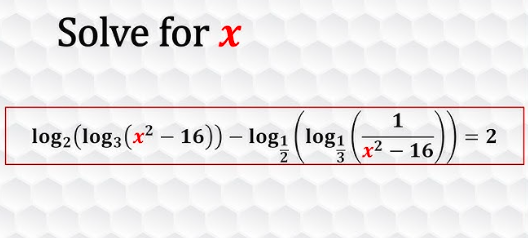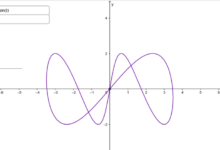Mastering How to Solve Natural Logarithmic Equations

Natural logarithmic equations may appear intimidating at first glance, especially for students encountering them for the first time. However, with the right knowledge and strategies, they can be handled just like any other algebraic expression. In this article, you’ll learn how to solve natural logarithmic equations step by step, along with examples and explanations to reinforce each concept.
What Is a Natural Logarithm?
Before diving into solving equations, it’s essential to understand what a natural logarithm is. The natural logarithm is commonly written as ln(x), and it’s the inverse of the exponential function e^x.
So, when you see an equation like:
ln(x) = 2,
you are actually being asked to solve for x in the equation:
e² = x,
which leads to x = e².
This fundamental relationship is the key to solving natural logarithmic equations.
Rules for Working with Natural Logs
To solve natural logarithmic equations effectively, you need to remember a few properties of logarithms that are equally applicable to natural logarithms:
- ln(ab) = ln(a) + ln(b)
- ln(a/b) = ln(a) – ln(b)
- ln(aⁿ) = n * ln(a)
- e^(ln(x)) = x
- ln(e^x) = x
These rules allow you to simplify and manipulate expressions involving natural logs.
Step-by-Step Strategy
When faced with a natural logarithmic equation, here are the general steps to follow:
- Isolate the ln term on one side of the equation.
- Use properties of logarithms to combine or break up terms if needed.
- Convert the logarithmic equation to its exponential form.
- Solve the resulting equation algebraically.
- Check for extraneous solutions by ensuring all arguments of ln are positive.
Let’s look at how to apply these steps in different types of problems.
Solving Basic Natural Logarithmic Equations
Example 1:
ln(x) = 4
This is a simple form. To solve:
Step 1: Convert to exponential form
x = e⁴
x ≈ 54.598
Solving Equations with Coefficients
Example 2:
3ln(x) = 6
Step 1: Divide both sides by 3
ln(x) = 2
Step 2: Convert to exponential form
x = e²
Step 3: Approximate
x ≈ 7.389
This shows how to isolate the logarithmic term before converting.
Combining Multiple Natural Logs
Example 3:
ln(x) + ln(x – 3) = ln(10)
Step 1: Use the product rule
ln(x(x – 3)) = ln(10)
Step 2: Remove ln by equating the arguments
x(x – 3) = 10
Step 3: Expand and solve
x² – 3x – 10 = 0
Use the quadratic formula:
x = [3 ± √49] / 2
x = [3 ± 7] / 2
Solutions:
x = (3 + 7)/2 = 5
x = (3 – 7)/2 = -2
Step 4: Check both answers
ln(-2) is undefined, so x = -2 is invalid.
Valid solution: x = 5
Natural Logs in Rational Equations
Example 4:
ln((x + 1)/(x – 2)) = 0
Step 2: Solve
x + 1 = x – 2
Subtract x from both sides:
1 = -2, which is false.
Oops! Let’s go back:
x + 1 = x – 2 leads to contradiction, so something’s off.
Actually:
(x + 1)/(x – 2) = 1
Then:
x + 1 = x – 2
Still no solution. That means the equation has no valid solution. This how to solve natural logarithmic equations demonstrates that not all natural log equations have solutions — especially if the argument never satisfies the identity.
See also: Why Businesses Need Professional Commercial Electricians in Shrewsbury
Exponential Form Equations Involving Natural Logs
Example 5:
ln(3x + 2) = 1
Step 1: Convert
3x + 2 = e¹ ≈ 2.718
Step 2: Solve
3x = 2.718 – 2 = 0.718
x ≈ 0.239
Check:
ln(3 * 0.239 + 2) = ln(0.717 + 2) = ln(2.717) ≈ 1 ✅
Equations Requiring Substitution
Example 6:
ln(x² + 1) = 3
Step 1: Convert
x² + 1 = e³ ≈ 20.085
Step 2: Solve
x² = 19.085
x = ±√19.085 ≈ ±4.37
Check both: ln(4.37² + 1) = ln(20.085) = 3 ✅
ln((-4.37)² + 1) = same ✅
Both solutions valid.
More Complex Logarithmic Forms
Example 7:
Step 1: Combine using product rule:
ln((x – 2)(2x + 1)) = 2
Step 2: Convert:
(x – 2)(2x + 1) = e² ≈ 7.389
Step 3: Expand:
2x² + x – 4x – 2 = 7.389
2x² – 3x – 2 = 7.389
Step 4: Subtract:
2x² – 3x – 9.389 = 0
Step 5: Use the quadratic formula:
Discriminant = (-3)² – 4(2)(-9.389) = 9 + 75.112 = 84.112
x = [3 ± √84.112]/(2 * 2)
x ≈ [3 ± 9.171]/4
x ≈ (3 + 9.171)/4 ≈ 3.543
x ≈ (3 – 9.171)/4 ≈ -1.543
Check both:
- x = 3.543 →
ln(3.543 – 2) + ln(2 * 3.543 + 1) = ln(1.543) + ln(8.086) = ln(12.48) ≈ 2 ✅ - x = -1.543 → ln(-1.543 – 2) invalid ❌
Only valid solution: x ≈ 3.543
Real-World Applications
Natural logarithmic equations often arise in:
- Population growth models
- Radioactive decay
- Finance (compound interest)
- pH chemistry
- Carbon dating
These fields rely heavily on base-e mathematics. Understanding how to solve natural logarithmic equations is crucial for interpreting and applying such models.
Final Thoughts
Solving natural logarithmic equations may seem challenging, but with consistent practice and clear understanding of logarithmic rules, you’ll find it much more manageable. Whether you’re a student or someone applying these in science or engineering, learning how to solve natural logarithmic equations can enhance your mathematical toolkit.



